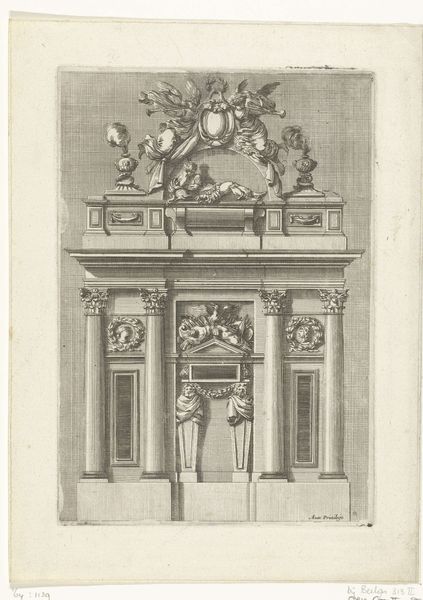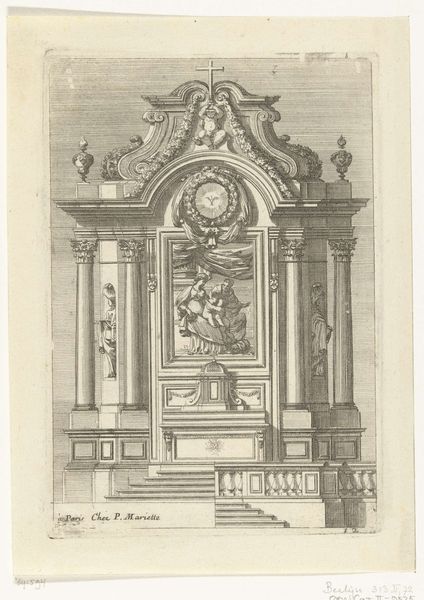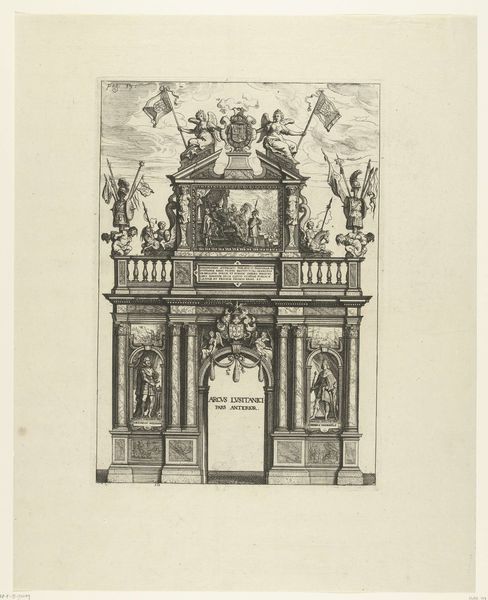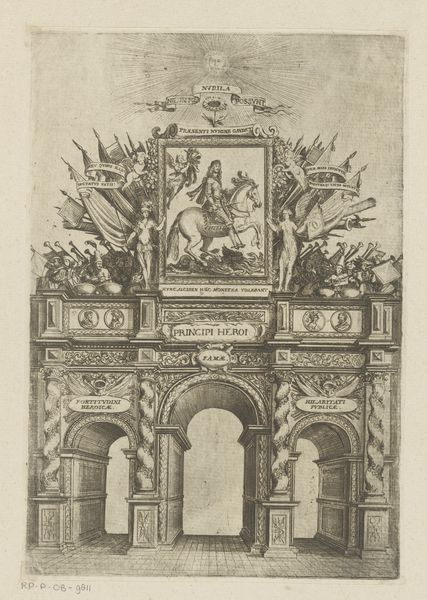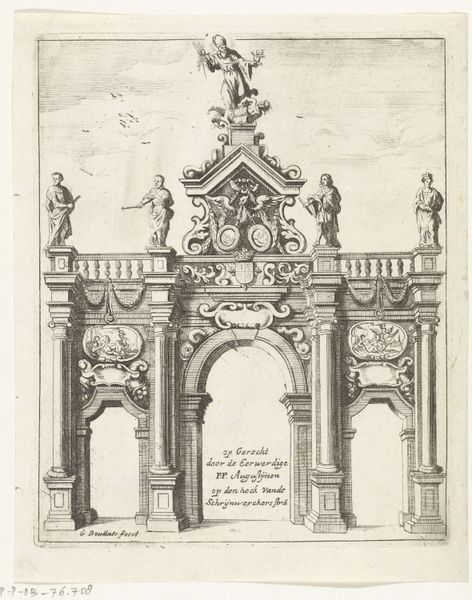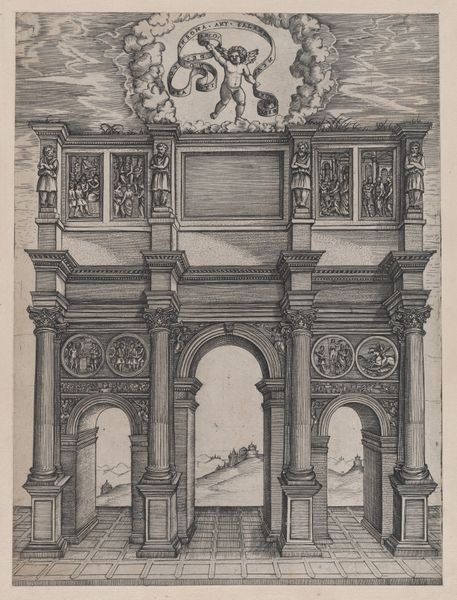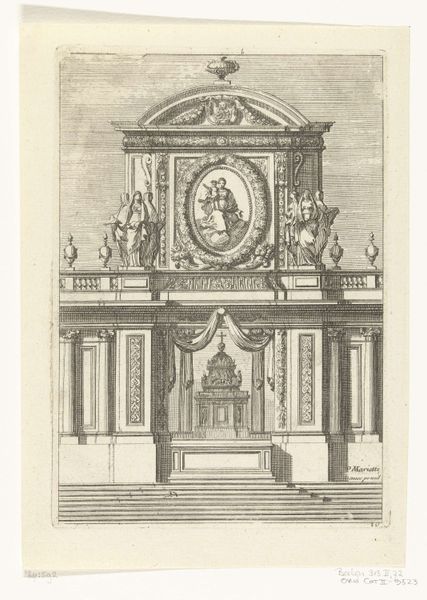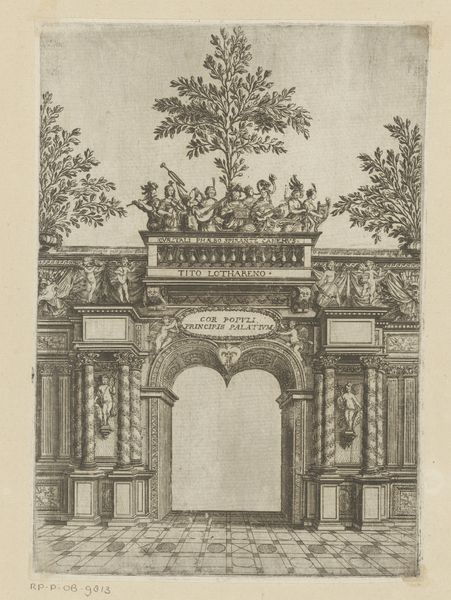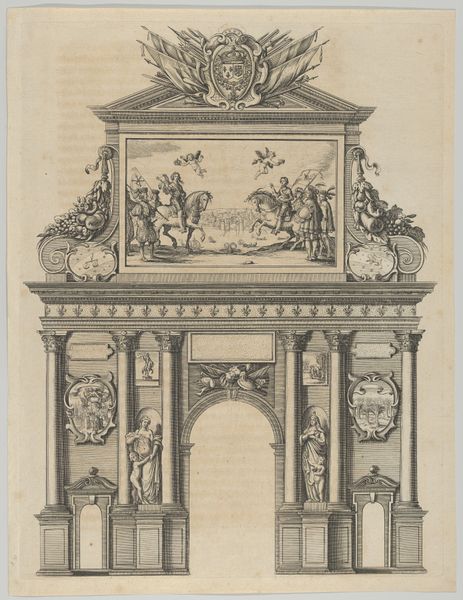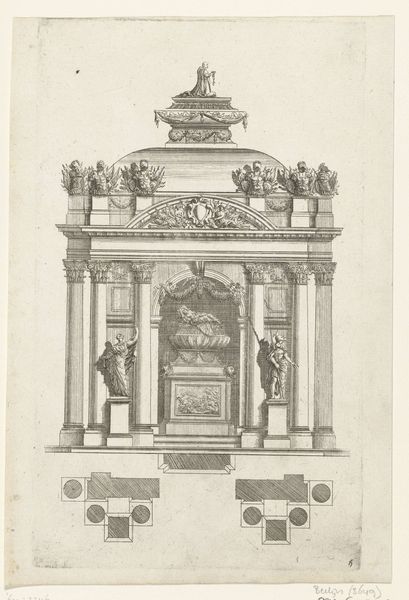
print, engraving, architecture
#
baroque
# print
#
classical-realism
#
geometric
#
line
#
cityscape
#
history-painting
#
engraving
#
architecture
Dimensions: height 273 mm, width 192 mm
Copyright: Rijks Museum: Open Domain
This is Sébastien Leclerc’s “Triomfboog met Karel IV,” an etching. As a print, the artwork is inherently tied to modes of production: the etched lines create a matrix to be inked and pressed, allowing the image to be multiplied. The texture created from these lines influences the appearance of the artwork, giving it an almost architectural quality. Etching is a skilled tradition which blends artistry and craft, demanding technical precision. The process involves coating a metal plate with a waxy, acid-resistant substance, then drawing through the coating with a sharp tool to expose the metal. The plate is then immersed in acid, which bites into the exposed lines, creating an image that can be inked and printed. The use of printmaking, as opposed to a unique work of art, is tied to social issues of labor, politics and consumption. Printmaking allows for wide distribution of images, meaning ideas can spread throughout society, contributing to shared political and cultural values. Ultimately, recognizing the materials, making, and context of Leclerc's etching helps us understand its full meaning, challenging traditional distinctions between fine art and craft.
Comments
No comments
Be the first to comment and join the conversation on the ultimate creative platform.

